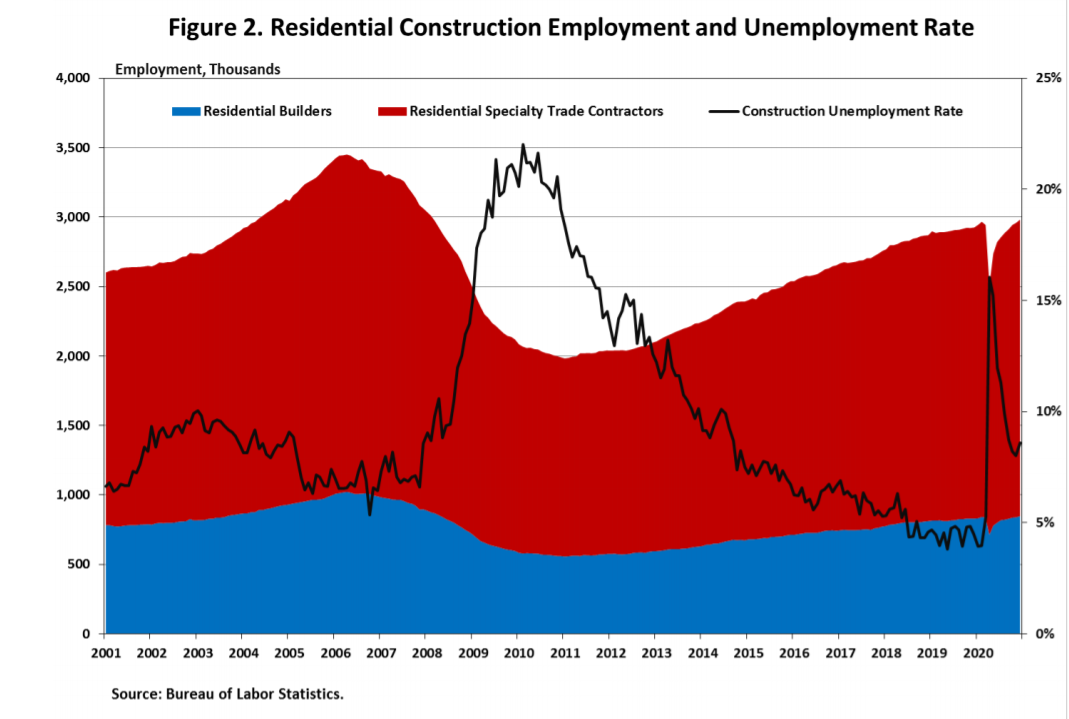 As the housing market faces inventory issues in lieu of high demand, a new report from the Home Builders Institute (HBI) finds the supply of homes may grow even tighter, as the construction industry faces a shortfall of approximately 200,000 workers.
As the housing market faces inventory issues in lieu of high demand, a new report from the Home Builders Institute (HBI) finds the supply of homes may grow even tighter, as the construction industry faces a shortfall of approximately 200,000 workers.
According to the first-ever HBI Construction Labor Market Report, a shortage in skilled workers trade workers directly employed by home builders and subcontractors remain widespread throughout all regions. Builders nationwide cite the difficulty in filling positions as among their top concerns, ranking third behind high lumber prices and regulatory burdens.
“The importance of tracking construction labor cannot be overstated. The home building industry faces a severe shortage of skilled workers,” said Ed Brady, HBI's President and CEO. “This persistent shortfall endangers housing affordability and availability, and hinders a robust economic recovery. For Americans and their communities to thrive in the post-pandemic era, we must build a new generation of skilled tradespeople and promote job opportunities in the construction trades.”

The report, based on research of the Economics Group of the National Association of Home Builders, found that the share of builders reporting a worker shortage was 60%. The percentage is especially high relative to the acceleration for total housing starts, which increased from a seasonally adjusted annual rate of under one million single-family and multifamily units in April 2020 to a rate of roughly 1.5 million at the end of 2020.
Brady noted that labor represents approximately 30%-40% of the cost of a typical new home.
"That share of the costs is rising, due to the shortage of available labor," Brady said. "When you consider that scarcity of labor causes construction delays, which then creates further costs, you can see how both housing supply and affordability are negatively affected."
The report found that total construction industry (encompassing both residential and non-residential) payroll employment totaled 7.4 million in December 2020, and out of this total, residential construction employment accounted for three million payroll jobs, broken down as 848,000 builders and 2.1 million residential specialty trade contractors. The six-month moving average of job gains for residential construction was 27,000 a month. Since the low point following the Great Recession, residential construction has gained 999,300 positions, and in the last eight months of 2020, residential construction added 472,500 jobs in total offsetting all the jobs lost in March and April.
Click here to view the HBI Spring 2021 Construction Labor Market Report.

 theMReport.com Your trusted source for mortgage banking news
theMReport.com Your trusted source for mortgage banking news








